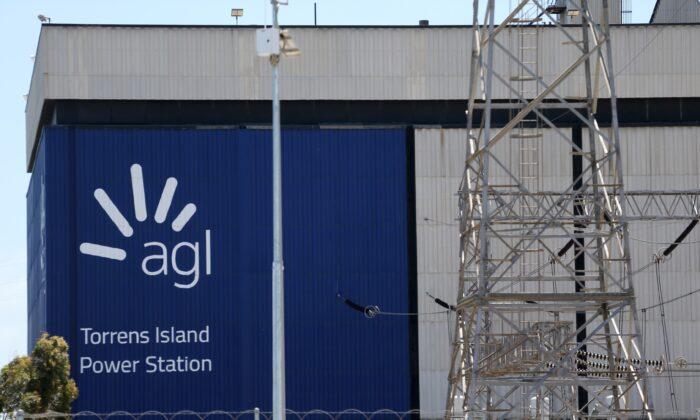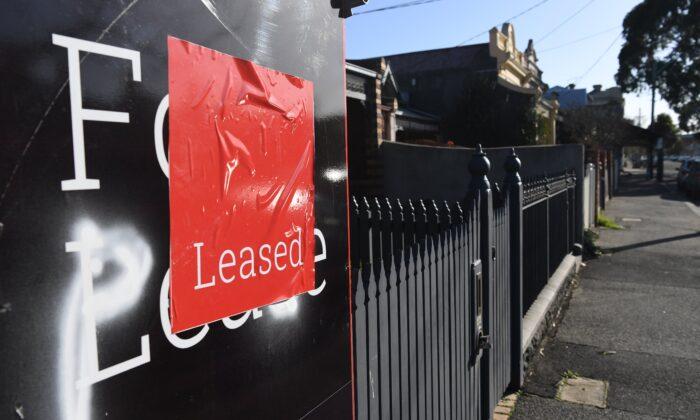AGL Energy has issued a massive profit upgrade as it prepares to slug customers with bill increases of up to 30 percent, igniting the share price.
Shares in Australia’s largest electricity generator surged 11.3 percent or $1.09 (US$0.75) to $10.75 (US$7.4) in afternoon trade as the top performing stock on June 16.
As Australia’s largest emitter, the company is spending up to $10 billion (US$6.9 billion) over the next eight to 12 years on shutting down ageing coal-fired power stations and replacing them with renewable energy and fast-start gas units.
Announcing a brighter outlook for shareholders this year and next, AGL chief executive Damien Nicks said the business was highly leveraged to wholesale prices, which have increased significantly in recent years.
“We are acutely aware of the impact to our customers in this inflationary period,” Nicks told AAP.
“It’s a tough period for everyone.”
Amid rising energy poverty, Nicks encouraged customers to switch to monthly from quarterly bills to help manage cost of living pressures.
Price hikes take effect from July 1 and the company is expecting an increase in customer debt despite taxpayer-funded bill relief hitting accounts nationwide.
“We'll be working with customers to help them as best as we possibly can,” Nicks said.
Nicks said AGL would be “vigorously defending” allegations the company took advantage of its market power and intentionally increased the price of wholesale electricity.
The class action filed in the NSW Federal Court seeks to compensate customers for “significant losses” caused by AGL’s alleged manipulation of the electricity market.
Law firm Piper Alderman alleges contraventions were a cause of the prices set by regulators under default market offers, which meant prices and power bills were higher than they would have been.
AGL continues to target a complete exit from coal-fired generation by the end of FY35 and will reuse the sites as industrial hubs.
But consumers and governments fear more blackouts if new assets are not ready to replace ageing, unreliable coal generators in the national electricity market.
“We are focusing on reliable, flexible, low-load operations, particularly for Bayswater and Loy Yang,” chief operating officer Markus Brokhof said.
The Bayswater coal-fired power station in the Upper Hunter region generates enough electricity to power two million NSW homes and will be among the last to close, between 2030 and 2033, as planned.
Loy Yang A power station, crucial for Victoria’s power supply, remains targeted for closure in 2035.
Brokhof said gas demand was declining as more customers go electric, but short-term gas prices have been a key driver of electricity prices.
Brokhof said AGL was working with smaller producers to lock in gas supplies, while partnerships with larger gas producers would be a key source of future supplies, particularly for 2027.
The Australian Energy Market Operator has warned of gas shortfalls if there is extreme weather this winter, and predicts a long-term supply gap from 2027.
Releasing updates during “investor day”, AGL forecast underlying earnings for FY23 of $1.33 billion (US$0.91 billion) to $1.375 billion (US$0.94 billion) (previously $1.25 billion (US$0.86 billion) to $1.375 billion (US$0.94 billion)).
After a strong second half of the year, the company expects a higher underlying profit after tax of $255 million (US$175.2 million) to $285 million (US$195.8 million) (previously $200 million (US$137.4 million) to $280 million (US$192.4 million)).
The upgrades reflect increased generation due to improved plant availability, a reduction in forced outages and a higher customer margin.
This is partly offset by higher operating costs on increased maintenance costs, bad debt expenses and the impact of inflation.
AGL said “sustained periods” of higher wholesale electricity prices mean underlying earnings for FY24 are forecast to surge to $1.875 billion (US$1.29 billion) and $2.175 billion (US$1.49 billion) and profits more than double from $580 million (US$398.5 million) to $780 million (US$535.9 million).





